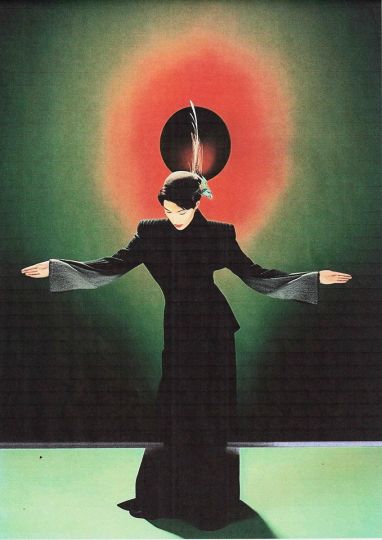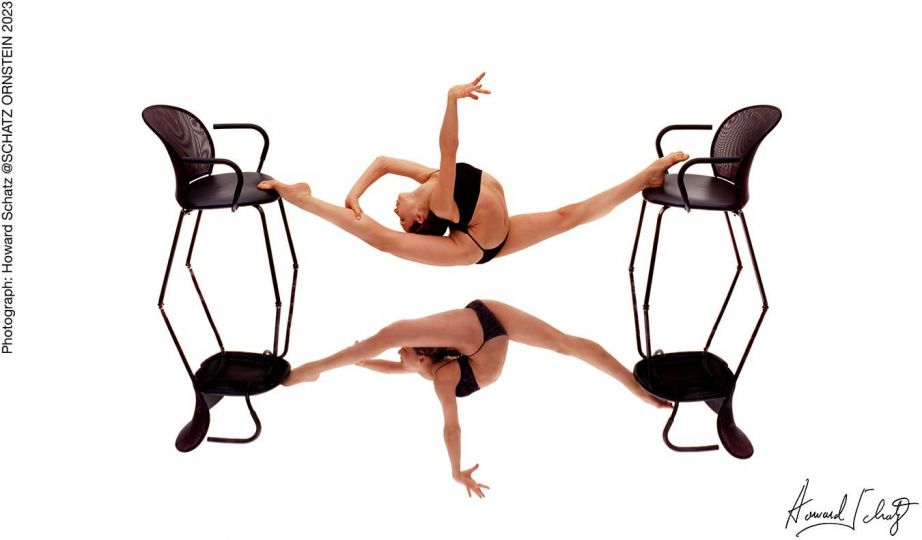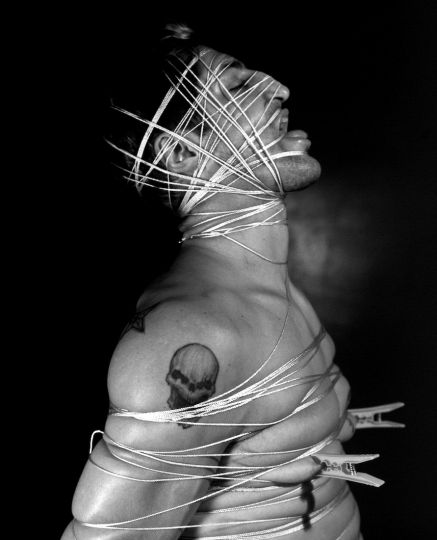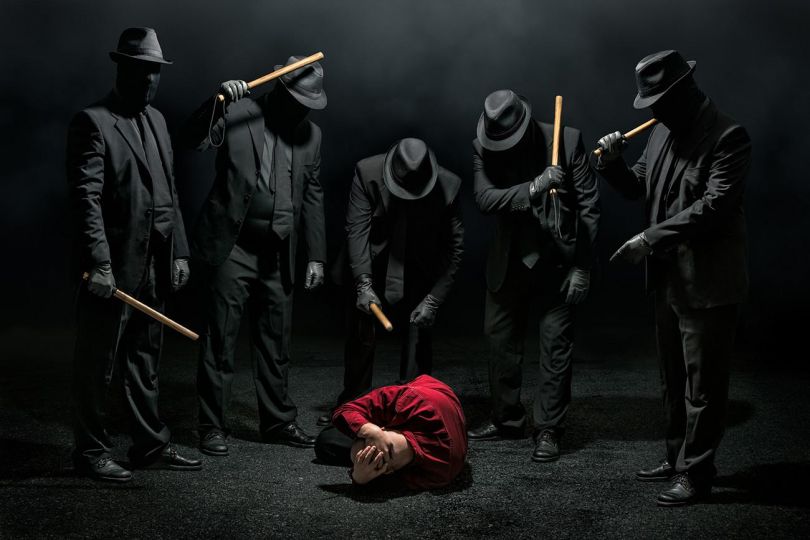The work of the iconic photographer Helmut Newton is unique, world renowned, and continues to be highly in demand on the art market and in the world of print publishing. When it comes to exhibiting and interpreting Newton’s oeuvre, there is no better person than Dr. Matthias Harder, the Helmut Newton Foundation’s curator and, since 2019, its director. With fascinating anecdotes that explain the photographer’s distinct approach combining nudes, portraiture, and fashion, revealing the influence of Newton’s love of art and film on his work, Harder knows how to educate and entertain audiences alike.
Born in Kiel in 1965, Harder studied art history, classical archaeology, and philosophy in Kiel and Berlin. He is a member of the German Society of Photography, a board member of the European Month of Photography, a contributor to respected international magazines, such as Art in America, Foam, Aperture, Eikon, and Photonews, and has penned numerous articles for books and exhibition catalogues.
Having staged in 2019 a second reprisal of the legendary SUMO exhibition (first shown in 2009), Harder’s newest exhibition project “Body Performance” will open at the Helmut Newton Foundation on November 29, 2019. For the first time in Germany, this group exhibition brings together photo sequences whose origins lie in performance art, dance, and other staged events, complemented by a selection of street photography and conceptual photography series. On view will be works by Vanessa Beecroft, Yang Fudong, Inez & Vinoodh, Jürgen Klauke, Robert Longo, Robert Mapplethorpe, Helmut Newton, Barbara Probst, Viviane Sassen, Cindy Sherman, Bernd Uhlig, and Erwin Wurm.
In between the two shows, we spoke to Harder on the neverending appeal of Newton’s photographs, the goals of the Helmut Newton Foundation, and the challenges of presenting and defending such an iconic body of work for more than a decade.
Nadine Dinter: You have been working as the curator of the internationally renowned Helmut Newton Foundation since its founding in 2004. Did you know Helmut Newton personally and how did everything come about? Who introduced you and how did you find out about this top-notch job?
Matthias Harder: Yes, I met Helmut Newton briefly at the opening of his retrospective at Berlin’s New National Gallery in 2000 and then three years later, for a couple of hours at a hotel in Berlin where he told me about his foundation that he was about to establish in his native city. At the time, I was working as the director of an art association near Hamburg and a common friend of ours had mentioned that Newton wanted to meet me. At the end of this great encounter, he asked me if I wanted to become his foundation’s curator. Of course, I said yes. I didn’t apply to a job listing in the newspaper – it just came about through our conversation about photography in general.
ND: How does the HNF operate? Who decides on the exhibitions? When does a show travel, and when does it turn into a so-called rotating exhibition, which gets shown again after 10 years, like the current one “Helmut Newton. SUMO”?
MH: Unfortunately, Helmut Newton died just a few weeks after we met, but June, his wife and then widow, living in Monte Carlo, became the driving force to make the foundation in Berlin a reality. So we were able to open as planned on 3 June 2004, her birthday. Helmut had left us a little note about what he wanted to do and to display, and at the beginning June decided which shows would be presented. Over the years we became partners in the decision-making process, and for the past few years I have planned the programming alone. Some of the Newton exhibitions have been shown again after around 10 years, renewed with a different selection, while others travel to renowned venues worldwide. It’s also part of my job to escort the Newton shows abroad, deciding on the selection of works, the installation, writing the wall texts, speaking at press conferences, and giving lectures on Newton and his foundation. It’s interesting how the same show can look completely different in another venue. So far, we have shipped Newton’s works from Berlin to Italy, Sweden, Hungary, Greece, the Netherlands, France, and the United States.
ND: On November 29th, the new exhibition “Body Performance” will open at the HNF. The line-up reads like a “who’s who” of contemporary conceptual art and photography: Cindy Sherman, Inez & Vinoodh, Viviane Sassen, Robert Mapplethorpe, Erwin Wurm, and Vanessa Beecroft, to name just a few. What can we expect of the show and how does the topic “Body Performance” tie in with the works of Helmut Newton, whose works are also part of this group exhibition?
MH: I am pretty sure that this show will be spectacular. In curating such a group show, I always start with Newton and his work. This was already the case with the huge and astonishing Paparazzi show in 2008. In 1970, Newton hired real Paparazzi for his fashion photography in Rome – according to his autobiography, he admired their speed and naughtiness in catching the right moment in photography. For the show “Body Performance” we have a completely different source. One of Newton’s relatively unknown works is his photo series of the dancers of the Monte Carlo Ballet. Taken over many years, the photos were intended for print in the theater’s program booklets and special publications, and Newton had only a few of the motifs enlarged for inclusion in his own exhibitions. This series is surprisingly conceptual when compared to his photographs of choreographies by Jan Fabre and Pina Bausch, for here Newton consequently captured unexpected performative actions outside of the usual stage context. Slipping into the role of a theater director, he accompanied the dancers on the streets of Monaco, on the steps behind the famous casino, near an emergency exit of the theater, or in the nude at his own home. This unusual Newton series is now joined by photo sequences shot by other great photographers whose origins lie in performance art, dance, and other staged events, complemented by a selection of street photography and conceptual photography series. With their common focus on the human body, the images document or interpret performances, which in many cases have also been initiated by the photographers themselves.
ND: Newton sadly passed away 15 years ago in 2004. How many images officially make up the “Newton heritage”, and how do you continuously manage to present a new aspect of his work with each show?
MH: We have thousands of Newton prints at the foundation’s in-house archive. One after the other, they have been entered into our database with all information on the print, including publications and exhibitions. In addition to the vintage and late prints we received from Helmut and June Newton as well as from his galleries, on behalf of the Helmut Newton Estate we have posthumously printed hundreds of photographs for various exhibitions (not for the art market, of course), such as White Women/Sleepless Nights/Big Nudes, World without Men, Polaroids, and Fired, to name a few. They allow us to uncover new aspects of his extraordinary, unrivaled work. Sometimes the shows are based on Newton’s own publications and we have transferred the motifs onto the walls; sometimes they address a certain topic or genre of Newton’s work. A year ago, all of the negatives and contacts sheets of Helmut Newton and Alice Springs were moved to our Berlin archive – it’s an incredible source for future exhibitions. But we will never print or display anything that was not marked on the contacts by Newton or published in a magazine or elsewhere. In thinking of a new show, one should think about the appropriate context first.
ND: Beside the foundation’s headquarters in Berlin, there are some Newton exhibitions travelling around the globe. What are the next shows to be presented abroad and where and when will they be opened?
MH: The Thierry Mugler retrospective just opened at Kunsthal Rotterdam and includes a special Newton room. A small solo show opened at Modem Center for Modern and Contemporary Arts in Debrecen, Hungary, on 26 October 2019. Besides this, I am preparing a show with José Alvarez on the very special collaboration between Yves Saint Laurent and Helmut Newton, which will open at the YSL Museum in Marrakesh in 2022 and afterwards travel to the YSL Museum in Paris. I am also working on a bigger Newton exhibition on all of his photographic genres at MALBA in Buenos Aires, which will open in early July 2020.
ND: On the international art market, only a few galleries sell Newton’s work, such as Hamiltons and Andrea Caratsch. Most of his images can be found for sale by auction houses like Christie’s. At the same time, fake Newton works can be found on eBay and other similar platforms. How are such problems handled and by whom? Does the foundation have a specific strategy to prevent such forgeries altogether?
MH: June Newton, our foundation’s president, decided a few years ago that all original Newton prints as well as signed editions should be at the Helmut Newton Foundation in Berlin – and we finally have them. So you are right, there are still just a few works left on the primary art market. But soon there will be one room dedicated to Newton at Hamiltons Gallery at the upcoming Paris Photo. And you can sometimes find original Newton prints on the secondary art market. On the other hand, there are many fakes out there, indeed. Just scans and poor prints, sometimes cutting off the edges, and with fakes signatures on the front or back, or only the first name “Helmut” written with a felt-tip pen. It’s ridiculous that people pay money for that (even it’s only a little money), thinking that they’ve gotten a special deal on a genuine print with a genuine signature. In 2007, we sent out a forgery alert to all big auction houses indicating these fakes and we will do so again if necessary. Most of the fakes are offered at online auctions and it’s hard to follow up on all the forgeries and copyright infringements. It’s impossible to prevent them altogether. But Helmut Newton isn’t the only photographer or artist whose works have been counterfeited.
ND: In 2020, Helmut Newton would have turned 100 years old. What’s being planned to celebrate this anniversary?
MH: We are planning to open a new big retrospective show on his birthday – 31 October 2020 – which will then travel first to Milan’s Palazzo Reale in 2021 followed by other great venues. The show will include many “new” works – motifs Newton either published in magazines like British Vogue in the 1960s or French Vogue in the 1970s, as well as motifs he printed as silver prints or marked in his contact sheets. We always follow his legacy. The show will naturally be accompanied by a book on the works. Additionally, a 90-minute film about Newton directed by Gero von Boehm will be broadcast primetime on his birthday.
ND: Which HNF show has been the most successful to date and why?
MH: Actually, all of the shows we have put on in Berlin and elsewhere have been very well received, regarding both the numbers of visitors and the press coverage. As the responsible curator, it makes me happy, of course. The three-part show with Mario Testino in 2017 was the best-visited one in Berlin, and the Newton show at the Grand Palais in 2012 was the most successful one abroad, with about 3,000 visitors a day.
ND: What’s your advice to the new generation of photographers who are inspired by Newton’s work?
MH: It’s always good to be inspired by such a master, but ultimately you have to do your own thing. Find your own style and way to visualize the world. Feel the zeitgeist, stay open-minded, work hard, and astonish us with authentic pictures!
ND: Thanks so much, Matthias, for taking the time to share your latest thoughts and news with our readers!
HELMUT NEWTON SUMO / MARK ARBEIT. GEORGE HOLZ. JUST LOOMIS. THREE BOYS FROM PASADENA / PHOTO COLLECTION OF HELMUT AND JUNE, on view until November 10th, at the Helmut Newton Foundation, Berlin
“BODY PERFORMANCE”, opening on November 29th, 8 pm; on view until May 10th, 2020.
HELMUT NEWTON FOUNDATION
Jebensstrasse 2
D – 10623 Berlin, Germany
















